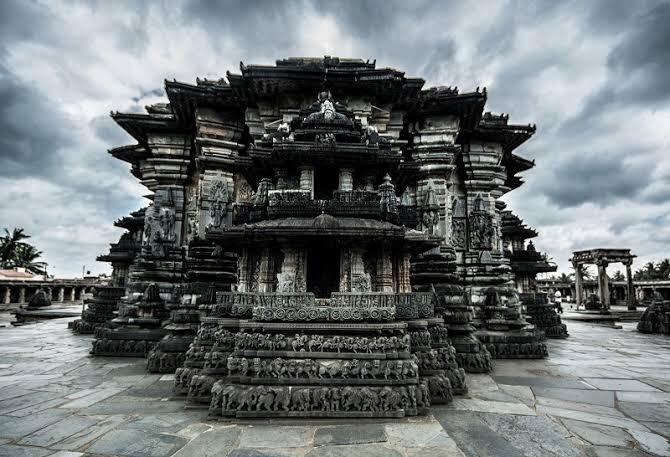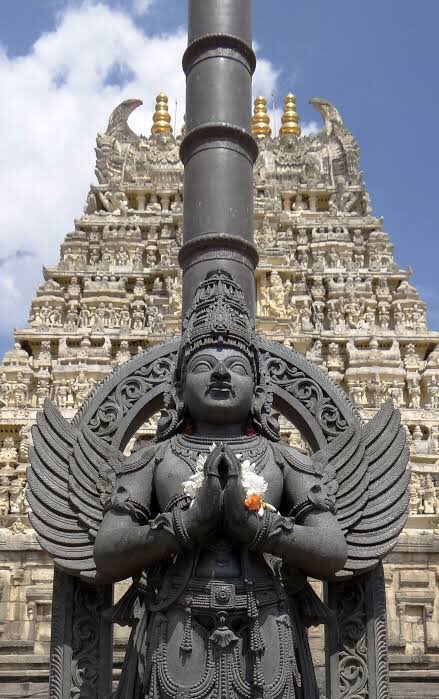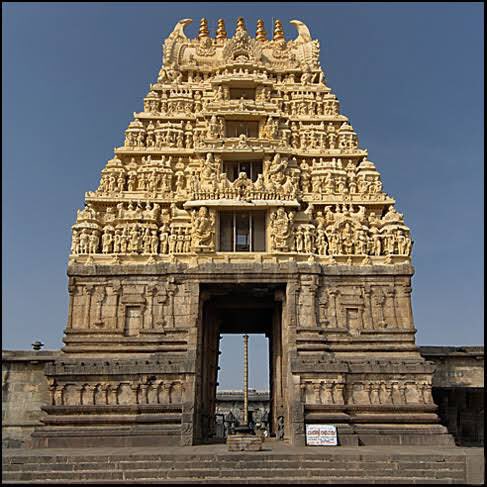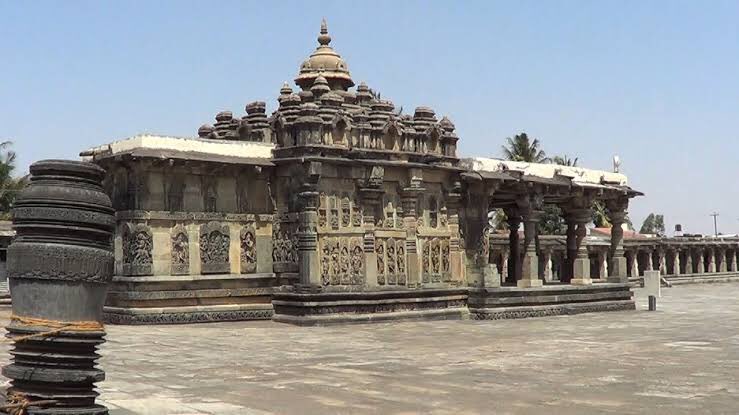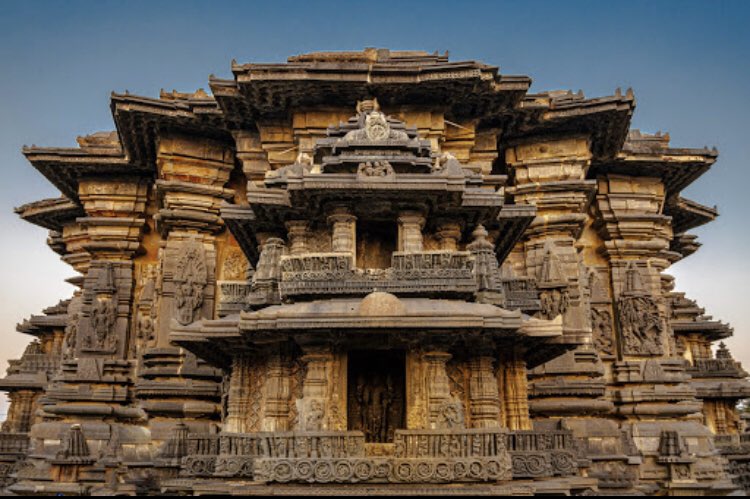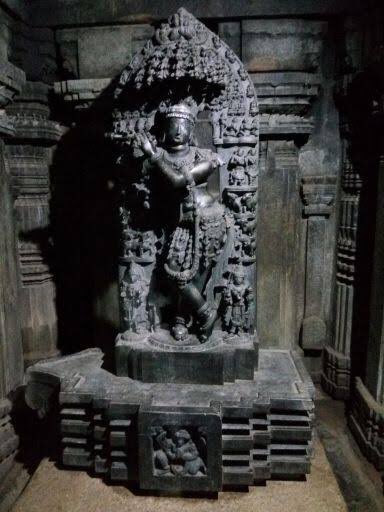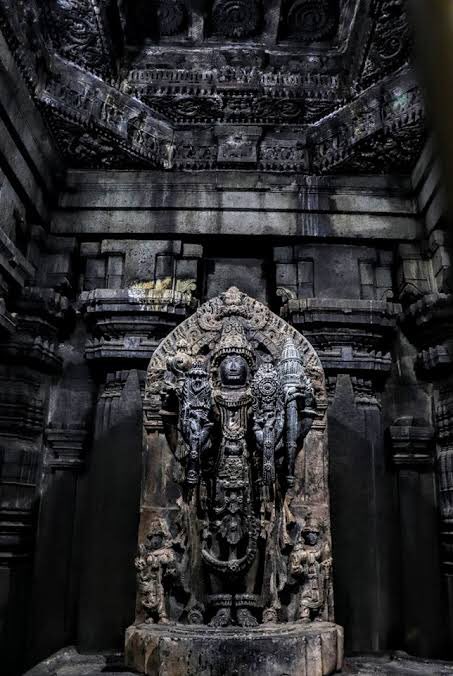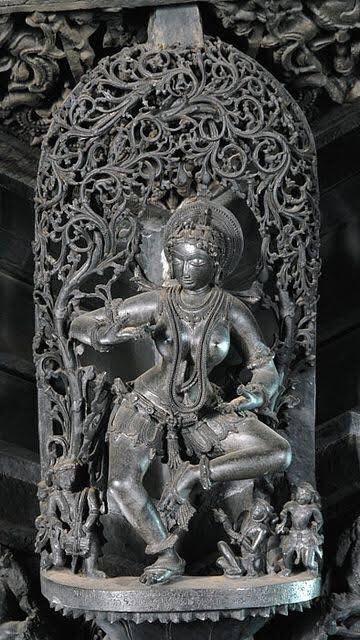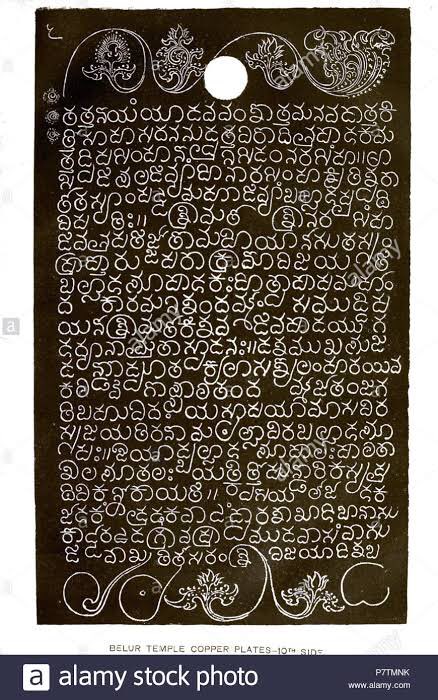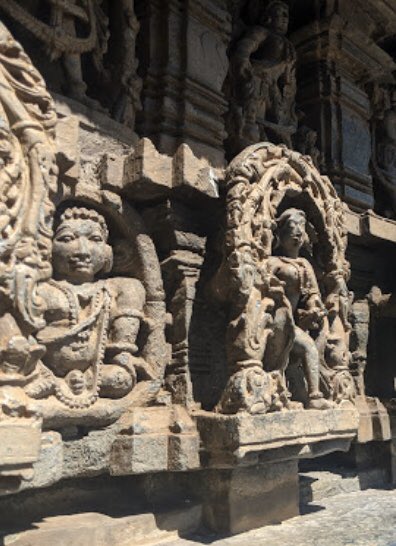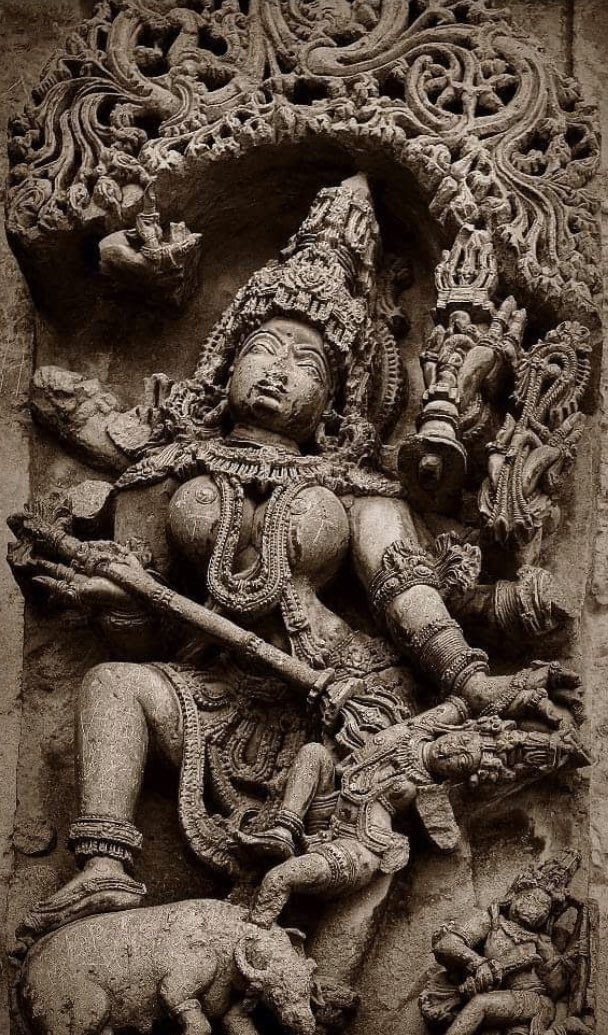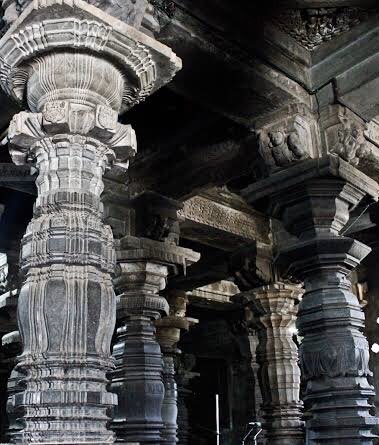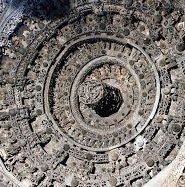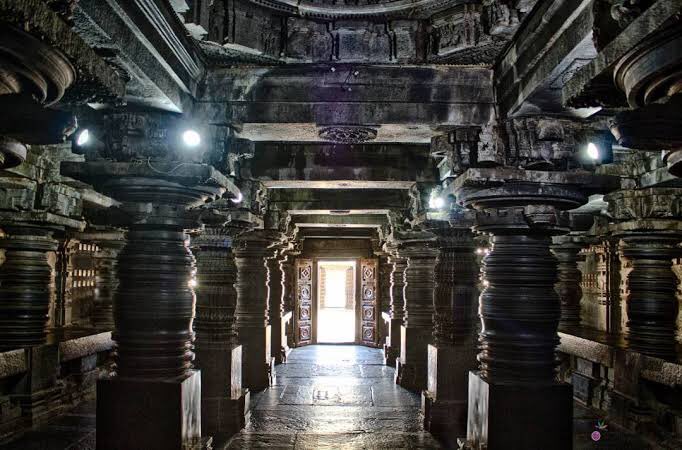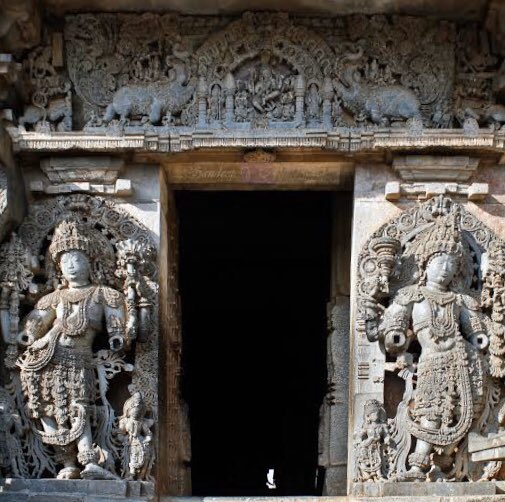The Chennakeshava temple is a testimony to the artistic, cultural & theological perspectives in 12th century South India & the Hoysala Empire rule. Chennakesava (handsome Kesava) is a form of the Hindu god Vishnu.
The Chennakeshava Temple, also known as Keshava, Kesava or Vijayanarayana Temple is in the Hassan district of Karnataka state, India. It was commissioned by King Vishnuvardhana in 1117 CE, on the banks of the Yagachi River in Belur (Velapura), an early Hoysala Empire capital.
The temple was built over three generations and took 103 years to finish. It was repeatedly damaged and plundered during wars, repeatedly rebuilt & repaired over its history. It is 35 km from Hassan city & about 200 km from Bengaluru.
The temple is enclosed in a courtyard with a pillared corridor of small shrines (damaged). The main temple in the center is on a high star-shaped platform with three symmetrical sanctums, set in a square matrix (89& #39; x 89& #39;) oriented along the east–west and north–south axes.
The western sanctum was for a statue of Kesava (missing), the northern sanctum of Janardhana and the southern sanctum of Venugopala, all forms of Vishnu.
The temple artwork depicts scenes of life in the 12th century, dancers and musicians, as well as a pictorial narration of Hindu texts such as the Ramayana, the Mahabharata & the Puranas through numerous friezes.
This Vaishnava temple reverentially includes many themes from Shaivism & Shaktism, as well as images of a Jina from Jainism & the Buddha from Buddhism. The temple is remarkable for its architecture, sculptures, reliefs, friezes as well its iconography, inscriptions & history.
The sanctums share a common community hall (sabha-mandapa) with many pillars. The outer walls, the inner walls, the pillars and the ceiling of the temple are intricately carved with theological iconography of Hinduism and display extensive friezes.
The central hall of the temple was originally open on all sides except the west, all other sides were later closed with perforated windows which reduces the lighting significantly.
But the secondary lighting throws limelight on the intricate sculptures & carvings like ;
Dwarapalakas : Guards of gate
Makara Torana : overhead panel on the main door
Mohini : The female form of Lord Vishnu
Dwarapalakas : Guards of gate
Makara Torana : overhead panel on the main door
Mohini : The female form of Lord Vishnu
The Belur temple complex along with the nearby Hindu & Jain Temples at Halebidu have been proposed to be listed under UNESCO World Heritage Sites.
Picture credit : Unknown
Picture credit : Unknown

 Read on Twitter
Read on Twitter